Choosing charity over cash: Why charitable donations in place of traditional incentives are on the rise
By dan-reilly●6 min. read●Oct 7, 2024
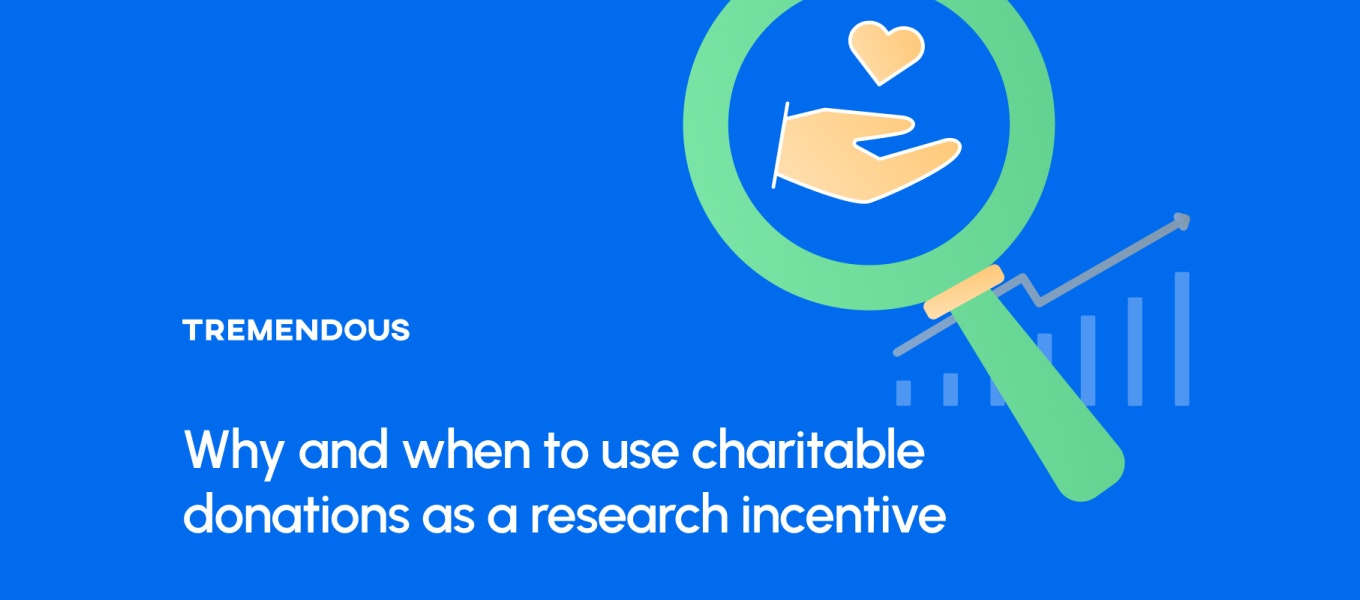
When conducting large-scale research, it’s a well-known fact that cash and gift card rewards are a great way to increase participation.
But these incentives can only go so far in enticing current and potential users of your product or service to participate. After all, what’s a $5 Starbucks gift voucher going to do for a C-suite executive?
And what about government employees and healthcare workers whose codes of ethics forbid them from taking any compensation that’s related, even tangentially, to their participation in a study?
These hypotheticals are just some of the issues organizations run into when trying to ensure their research projects have the highest quality respondents.
Rather than relying on results from people who are willing and able to devote time for a modest reward, more and more researchers are turning to a tactic that’s a win-win-win for their company, the respondent, and the greater good: charitable donations in lieu of gifts.
It’s a simple solution: rather than pay out cash or a gift card, you entice users and customers by informing them that you’ll be making a donation in their name to one or more charities in exchange for their time and thoughtful answers.
Studies show that this increases the likelihood of participation among your intended audience, with the added bonus of helping good causes and burnishing your public image.
To delve further into this trend, Tremendous surveyed three dozen market research leaders, project managers, and recruiters at Quirk’s NYC 2022.
Currently, only 17% of market researchers tell us they offer charitable donations as an incentive, but 36% are reported as wanting to add the option within the next two years.
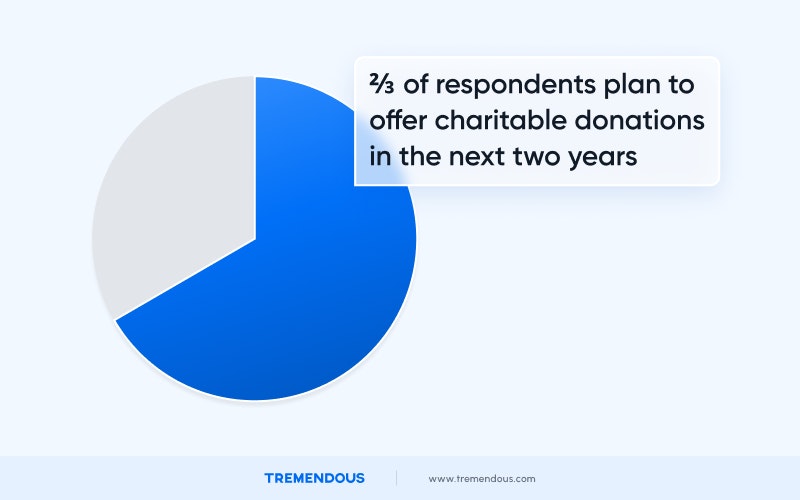
While prepaid cards are still used by more than half of surveyed researchers, demand for charitable giving is on the rise.
Two-thirds of respondents to our ReOps survey say they plan to offer charitable donations in the next two years, partly because it gets around any conflicts of interest or legal prohibitions on receiving gifts.
”When talking to professionals in the industry, we don’t incentivize the participant. Instead, we get them to donate their incentive to a charity.” says Benson Low, head of UX research at REA Group and ReOps board member. “Within their organization, they can’t accept gifts, but they want us to incentivize their time.”
The results of our survey confirmed what we were told by Holly Cole, director of ReOps: “For a long time the default has been to give somebody a gift card to thank them for participating in research. But there are so many times when that just doesn’t make sense. That’s why we’re seeing so much interest in charity options.”
If your company or organization is considering using this method to reward select industry professionals for their time, we’ve explored three scenarios to consider before deciding to add charitable donations to your list of available research incentives.
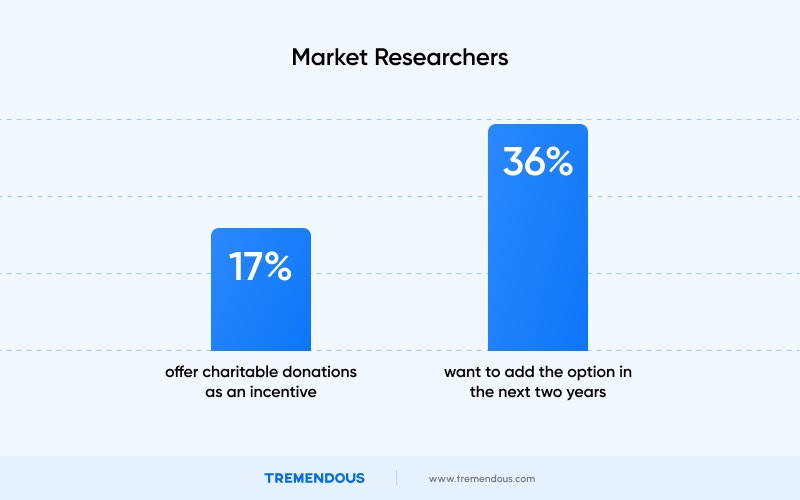
Table of contents
Your research participant works in an industry that can't accept monetary incentives
Your research participant has a conflict of interest and can't accept payment
Your research participant prefers a charitable donation to a cash incentive
Your research participant works in an industry that can’t accept monetary incentives
As Low said, there are many professional industries that have strict ethical guidelines and regulations against receiving financial incentives for anything outside of their job.
In order to keep up with professional, institutional, and federal standards for incentivizing and rewarding participants, researchers are increasingly finding that charitable donations are an ideal way around these regulatory roadblocks.
“One in 16 people in the United States works for the government,” Cole says. “They can’t accept gifts. But you can make a donation to a charity in their name as a thank you for participating.”
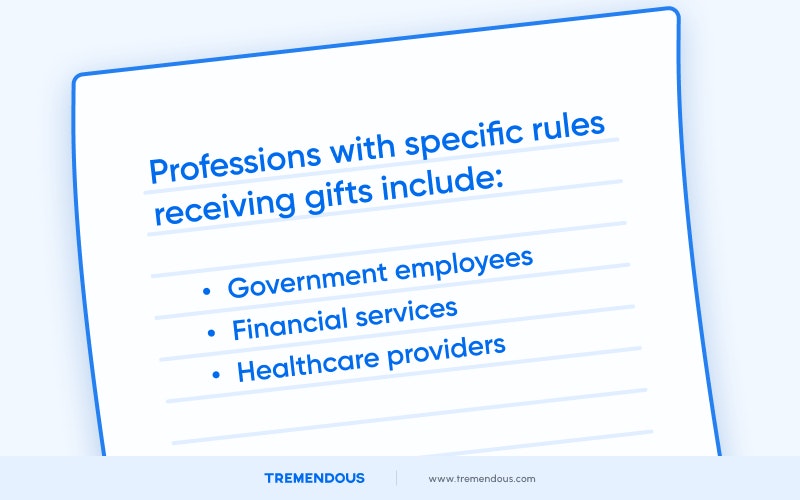
Brad Orego, head of research at Auth0, says this issue is something his team has run into while performing market research to better understand their company’s enterprise customers, particularly leaders of large tech companies.
“Many of them work in highly regulated industries and can’t accept monetary gifts, so it’s helpful to have the option for charity,” he explains.
Regulations and standards vary by country and industry and are constantly evolving, so before implementing any incentive strategy involving donations, it’s helpful to check with the Market Research Society’s Guidance standards.
Organizations like MRS work hard to keep up with industry trends and issue helpful, comprehensive resources on what types of rewards and incentives are allowed within regulated industries.
Your research participant has a conflict of interest and can’t accept payment
Sometimes the mere appearance of a conflict of interest is enough for a research participant to reject certain financial rewards or incentives.
Very few higher-up employees and business leaders will take part in a study that might be seen as breaching a company code of ethics or betraying the confidence of customers and/or investors.
“In many industries, the higher and higher up you go up the corporate ladder, the more you are going to run into this,” Cole says. “They can't accept payment for their time if they’re talking about their job because it could be considered biased.”
In recent years, a number of industries have clamped down on issues surrounding corporate gift-giving and financial rewards that land in the gray area of office policies.
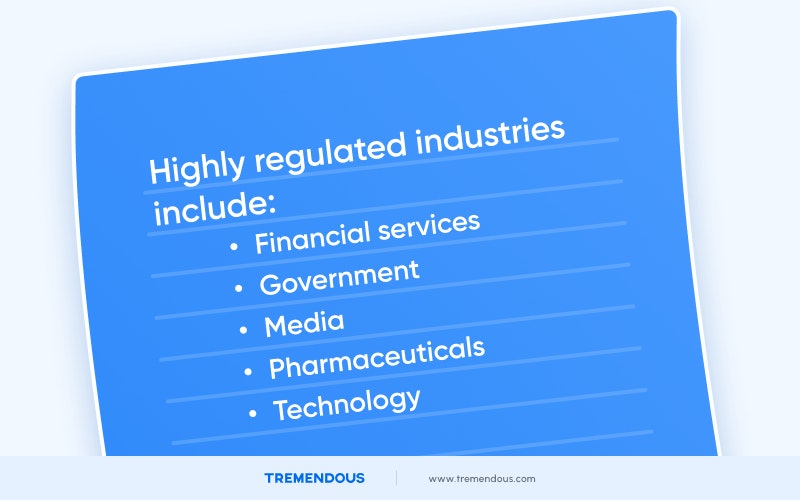
The easiest way around this, Cole advises, is for researchers to offer a variety of incentive choices from which the respondent can pick and choose. “If you can give them an option for a charitable donation instead of a financial reward, that’s fantastic,” she explains. “It’s set it and forget it,” she adds, meaning that it’s an easy option for researchers to automatically include in their surveys.
Your research participant prefers a charitable donation to a cash incentive
There are plenty of reasons why people donate to charities, from pure altruism to the desire for philanthropic recognition.
Lowell Reade, head of UX research at language-learning tech company Duolingo, says their users are firmly in the former camp. “They're genuinely really great people to get to spend time with,” he notes. “A lot of participants say, ‘You don't even have to pay me. I don't need an incentive.’ Of course, we still send them anyway.”
Reade’s team opted to let Duolingo survey respondents choose their own rewards for their time and input, with many choosing to go the charitable route.
“It’s very popular,” he says. “For some of them, they're participating in research because they want to make Duolingo better, not for the financial incentive. And so they pass that on to others that might benefit more from it.”
Regardless of their motivations, it’s clear that people like donating to organizations they feel can do some good in the world.
Charitable giving grew 118% from 2020 to 2021, with 2022 likely to have seen a similar rise. Based on Tremendous’ research, the nonprofits receiving the most donations include Save the Children, Doctors Without Borders, International Rescue Committee (IRC), American Red Cross, and Girls Who Code.
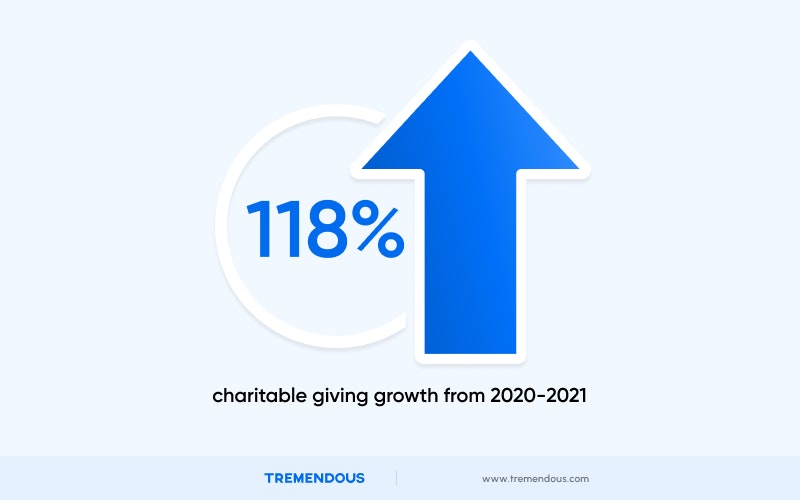
Clearly, this is a strong incentive that, when offered as a reward for participating in a study, will only increase respondents’ willingness to lend you their time.
On the flip side, consider who your respondent pool will consist of if you don’t offer incentives. “If you’re not compensating people for their feedback, one, they are a lot less likely to give you any in the first place,” says Cole. “So you’re fighting to get it. Two, the feedback that you do get is going to be lower quality, because free information is horribly biased. When somebody gives you something for free, it usually means they’re complaining. It’s often going to be the squeaky wheel.”
While this applies to all rewards, it’s important to remember when thinking about which ones to offer: if incentivized respondents give better feedback in general, imagine what you’ll get with the participation of executives and officials who don’t have to worry about crossing any ethical or professional lines.
Do charitable donations really work?
The short answer is a resounding “yes.”
According to a Stanford study on charitable giving and behavioral economics, people “like doing actions that return an immediate, emotional, and positive response, such as petting a dog to see it grin.”
In the context of donations, that feeling can spur further giving — a study of PayPal’s point-of-sale $1 donation requests found that “micro-giving opportunities may work to raise short-run funding but may also create conditions that support more frequent later giving, leading to larger total sums (about 9% larger) donated per user.”
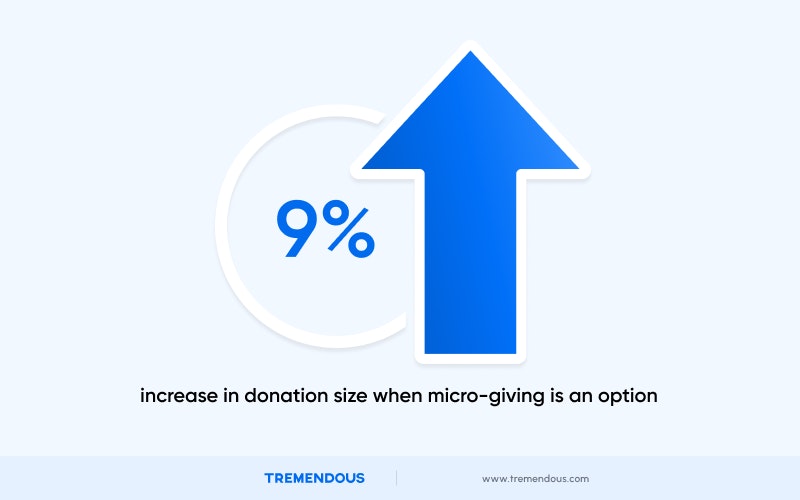
The most effective way of getting a user or respondent to choose to contribute to a charity is by providing them with information about how their donation will make an impact.
Stanford’s experiment found that donation rates increased by 45% when individuals were shown content explaining the impact of their charitable donation.
This clarity is crucial for getting more participation. So is avoiding overwhelming the respondents with options for donating.
Another study from the International Journal of Market Research concluded that “if a promised donation to charity is used as a survey incentive, it is better to specify the charity to which the donation will be made, or to limit the choice to two or three options, rather than give respondents the option of nominating the charity of their choice.”
In short, keep it simple and informative. You don’t have to do away with financial incentives like prepaid gift cards, but highlighting the charity options and allowing participants to select their reward will most often yield the best results.
“It's like a ‘choose your adventure’ with rewards,” Orego says. “Pick the one that's the best fit for you. Maybe you can't accept a financial reward or are worried about the appearance of a conflict of interest. Or maybe you just like the thought of doing something good today that only cost you the time you spent filling out a survey.”